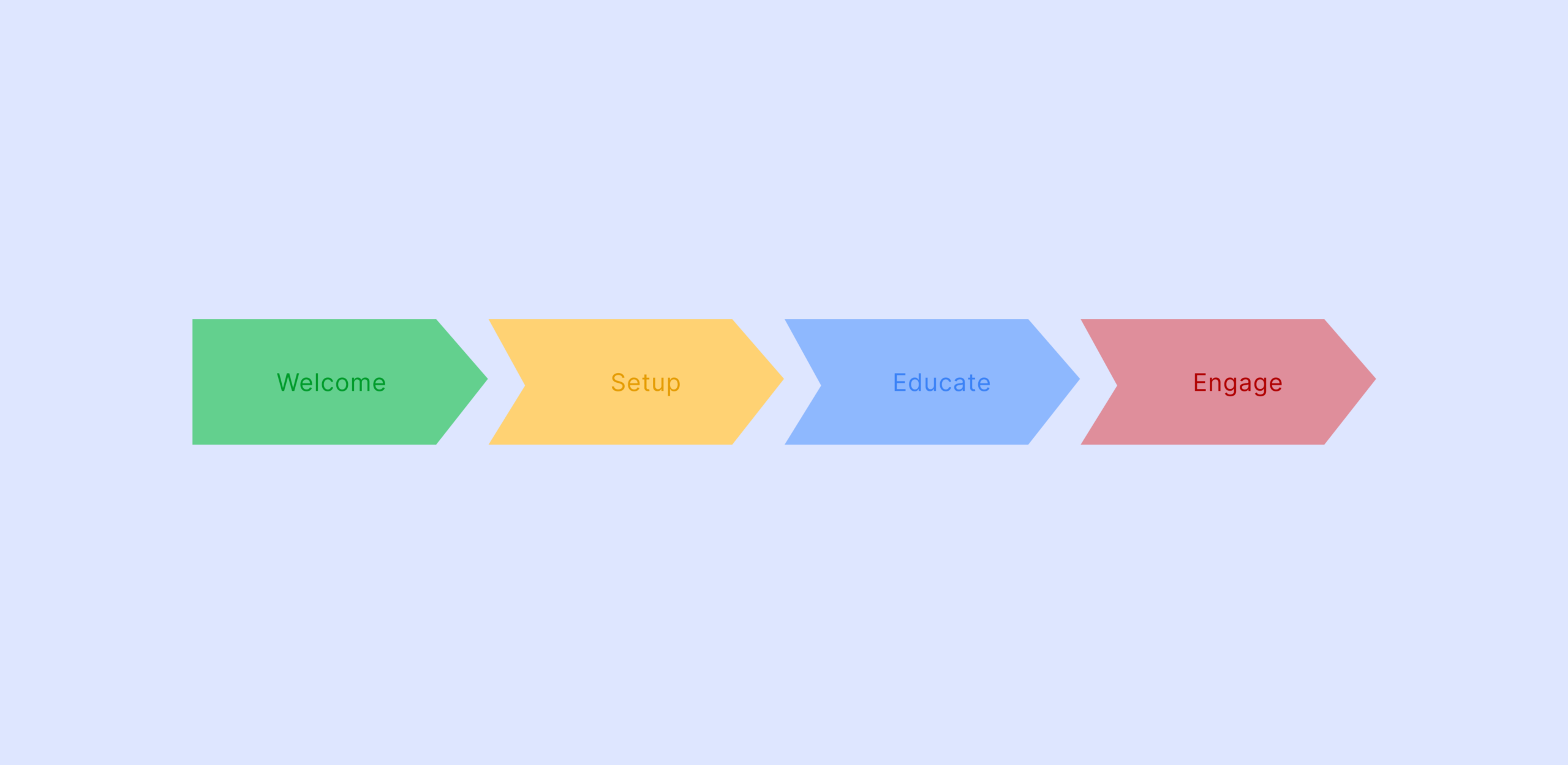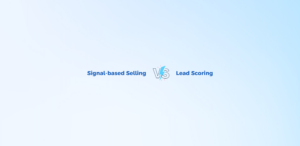Based on our 5+ years of experience in the SaaS industry with different SaaS products, we’ve noticed a consistent truth: customers choose our solutions out of a sea of other options and trust us with their specific needs.
We must show the unique value of what we have to offer right away.
I’ll share tips for making sure that every user not only feels good about the choice they’ve made but also integrates with our tools easily and gets the most out of them.
What is SaaS Customer Onboarding?
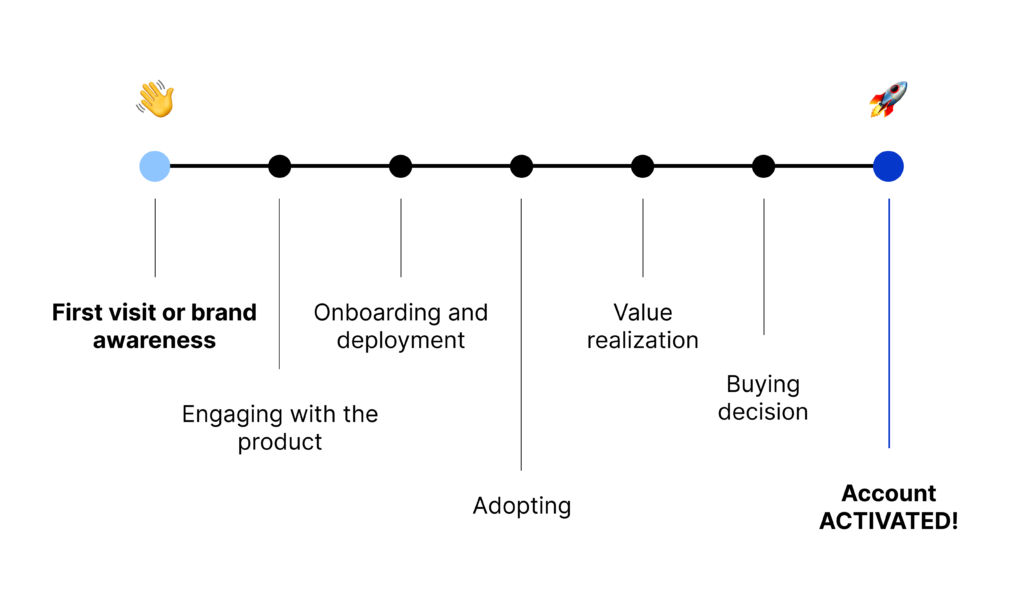
SaaS customer onboarding introduces new users to your product’s features and functions, aiming to familiarize and maximize their benefits. This process often involves resources like videos, guides, and FAQs. However, there’s no one-size-fits-all approach; what works for one sector might not for another.
What is the Importance of Customer Onboarding in SaaS?
A lot of customers churn soon after signing up, often before they fully understand how valuable the product is. Most of these people leave because they don’t understand the product or decide that it doesn’t meet their needs.
So, it’s important to have a good onboarding process; it not only sets the tone for the rest of the customer’s experience but also shows them that they can trust your product.
When done right, onboarding helps show how valuable your product is. You will get several advantages by creating an effective SaaS customer onboarding process. Here are some of them:
- Reducing churn rates ⬇️
- Increasing customer engagement 🔼
- Increasing customer satisfaction 🔼
- Well-educated customers for your product 🧑🏫
- Improving customer retention rates 🚀
What Are Customer Onboarding Metrics?
Customer onboarding metrics are important ways to measure how well your SaaS customer onboarding process works and how successful it is.
By keeping track of these metrics, businesses can find places to improve, prove that their methods work, and make sure that customers are using the product well and getting value from it. Here’s a more detailed but still brief summary:
Time to Onboarding Completion
Measures how long it takes to onboard customers. While a shorter duration can be beneficial, it’s essential that the process thoroughly educates customers about the product’s value.
- How to Calculate: Calculate the time from when a user starts the onboarding process to its completion. For instance, starting on January 1st and finishing on January 5th results in a Time to Onboarding Completion of 4 days.
Time to First Value (TTFV)
Reflects how quickly a customer perceives value from your product. A shorter TTFV can lead to reduced churn, especially if the product has a complex setup.
- How to Calculate: Monitor the time from a user’s initial sign-up or product purchase to the moment they achieve their first significant outcome or benefit from the product.
Conversion to Paid
Indicates the effectiveness of your onboarding by assessing how many trial users convert to paid plans. For products with longer commitments, securing payment before comprehensive onboarding can be a key strategy.
- How to Calculate: Divide the number of users who convert to a paid plan by the total number of trial users, then multiply by 100 to get the percentage.
Adoption
Metrics like Daily Active Users (DAU) and Monthly Active Users (MAU) show the frequency of product usage. High engagement indicates satisfied users, while low engagement can be a precursor to churn.
- How to Calculate DAU: Count the unique users who engage with your product daily.
- How to Calculate MAU: Count the unique users who engage with your product in a month.
Churn Rate
Measures the percentage of customers who cancel or don’t renew their subscriptions. A high churn within the first 90 days might indicate necessary adjustments in the onboarding process.
- How to Calculate: Divide the number of customers who churned during a specific period by the total number of customers at the start of that period. Multiply by 100 to get the percentage.
Customer Satisfaction Score (CSAT)
A direct calculation of how satisfied customers are with your product. Incorporating CSAT surveys during onboarding can provide valuable feedback.
- How to Calculate: After user interactions or at set periods, ask customers to rate their satisfaction on a scale (e.g., 1 to 5). The CSAT score is the average rating.
Product Usage Frequency
This metric assesses how often a specific feature or function of your product is used. Regular usage indicates that a particular feature provides significant value, while non-use might suggest that a feature is either not beneficial or possibly not intuitive enough for users.
- How to Calculate: Over a set period, calculate the number of times a specific feature is used. Divide by the number of active users to get an average usage frequency per user.
Onboarding Drop-off Rate
This rate measures the percentage of users who start but don’t complete the onboarding process. A high drop-off rate can be a red flag, pointing towards possible complexities or lack of clarity in the onboarding process. It’s essential to analyze the stages where users often drop off and make the necessary adjustments.
- How to Calculate: Divide the number of users who start but don’t finish the onboarding process by the total number of users who started onboarding. Multiply by 100 to get the percentage.
Return on Investment (ROI)
ROI is a key financial metric that is used to figure out how profitable and useful an investment is. In the case of SaaS customer onboarding, ROI looks at how much money your onboarding process makes compared to how much it costs. A high ROI means that the investments in onboarding (like tutorials, customer support, and interactive guides) are worth a lot of money because they help convert and keep customers. On the other hand, a low ROI could mean that the costs of onboarding outweigh the benefits, pointing to areas that need to be improved.
- How to Calculate: Subtract the cost of the onboarding process from the net profit gained from onboarded customers. Then, divide by the cost of onboarding and multiply by 100 to get the ROI percentage.
Phases of SaaS Onboarding
We can also call these steps “The 4 C’s of Onboarding”.
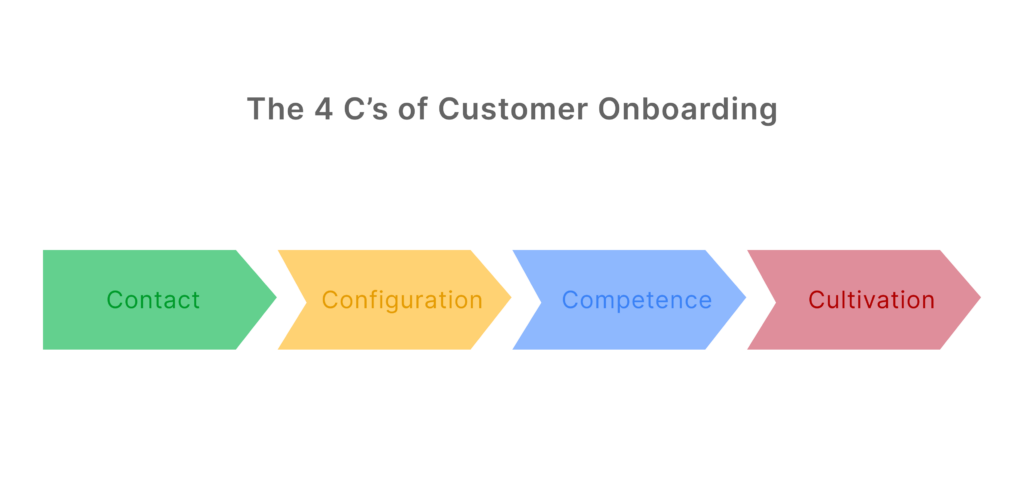
1. Welcome and Introduction
This is the initial touchpoint with the customer after they’ve decided to use your product. It sets the tone for their experience, communicates what they can expect, and begins building a relationship.
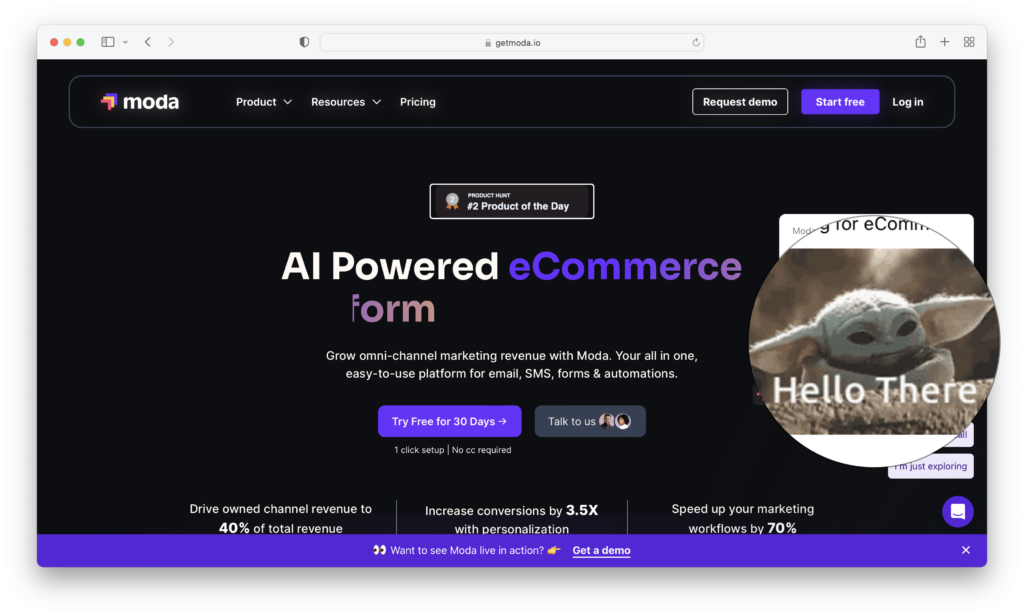
For instance, upon signing up for a project management tool, the user receives a cheerful welcome email. This email thanks them for choosing the platform, introduces some core features, and provides a clear next step—like setting up their first project.
2. Product Setup and Configuration
At this stage, users are guided through the initial steps required to set up the software to meet their specific needs. This can include integrations, customizations, and basic configurations. A seamless setup ensures that the user can start seeing the value of the product immediately.
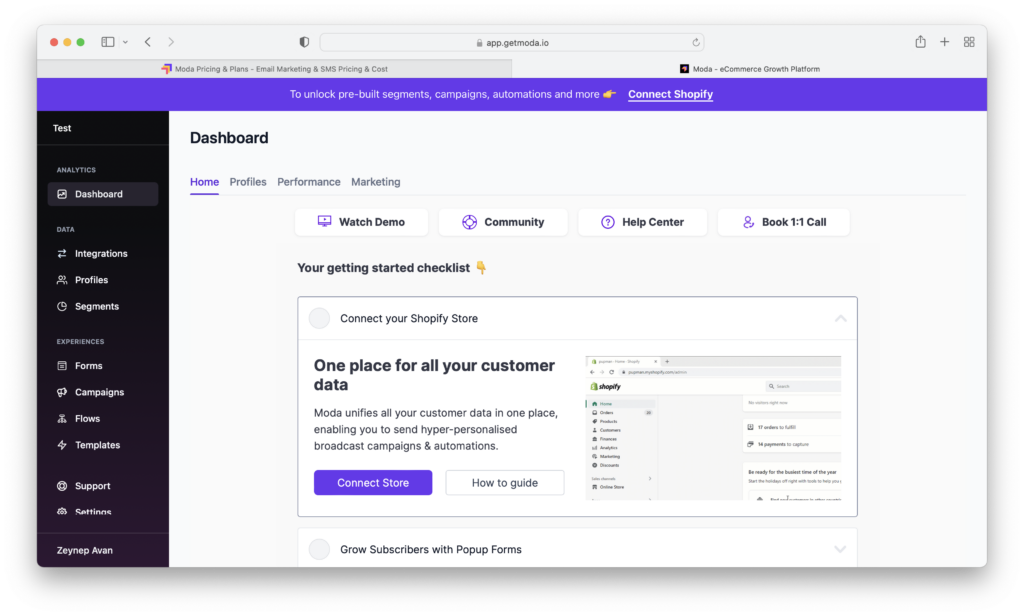
For example, for CRM software, the setup might involve importing contact lists, connecting email accounts, setting up sales pipelines, and customizing fields specific to the user’s business.
3. Education and Training on Key Features
Once the user is set up, they need to understand how to use the core features effectively. This phase involves providing resources, tutorials, and walkthroughs on the essential functionalities of the product.
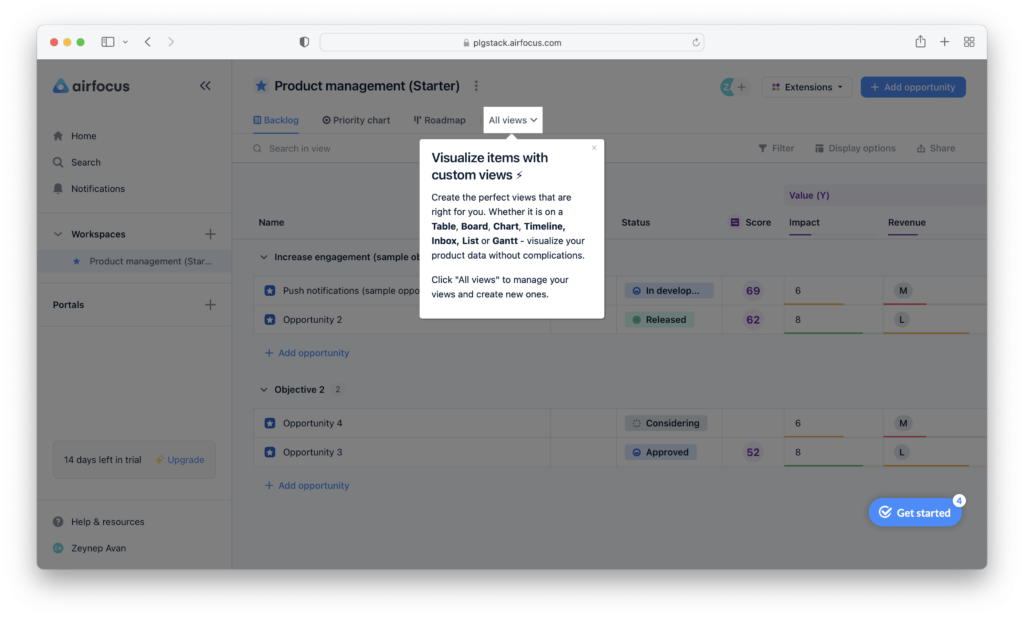
For example, graphic design software might offer video tutorials on how to create designs, use layers, apply effects, and export finished projects. Additionally, tooltips might pop up within the interface, guiding users through specific actions as they work.
4. Engagement and Encouragement for Regular Use
The goal is to ensure that users are not just onboarded but also continue to actively use and derive value from the product. This phase involves monitoring user behavior, sending reminders, and offering incentives for continued engagement.
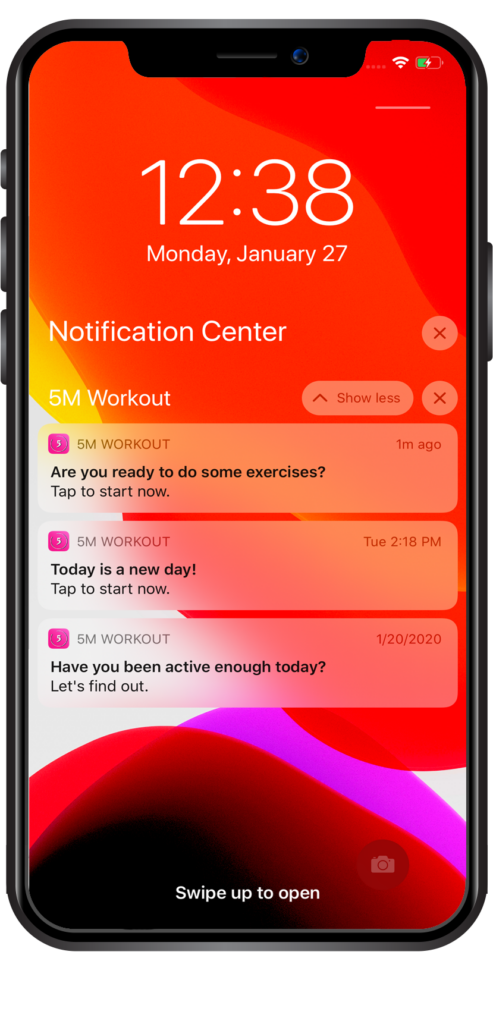
For example, if a user of a fitness tracking app hasn’t logged any workouts in a week, they might receive a friendly email with motivation, or perhaps a challenge, to return and log their activities. They could also be presented with success stories of other users as an encouragement.
5. Feedback Collection and Ongoing Support
To ensure that the product meets user needs and to identify areas of improvement, it’s crucial to collect feedback. This phase also underscores the importance of providing robust support to address any challenges or questions users might have.
For example, a month after using an e-commerce platform, merchants might be prompted with a short survey asking about their experience, challenges faced, and suggestions. Additionally, the platform provides 24/7 chat support to assist merchants with any queries they might have.
5 Key Steps to Building a Successful SaaS Customer Onboarding Process
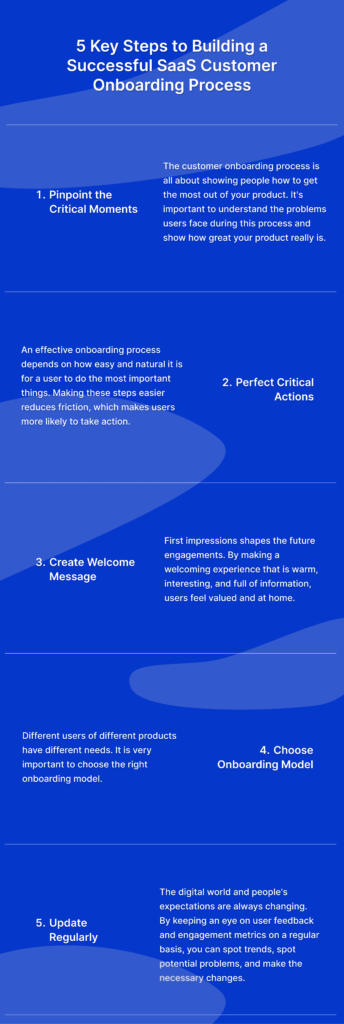
1. Pinpoint the Critical Moments in the User Journey
The customer onboarding process is all about showing people how to get the most out of your product. It’s important to understand the problems users face during this process and show how great your product really is.
Your own experiences can help you figure out where onboarding might be lacking. By really understanding and feeling the customer’s point of view, you can make sure they see the product’s value and stay interested.
Also, showing them their part in the whole process gives them a sense of responsibility and ownership, which makes them even more committed to the product’s success.
Personal Experience Alert! 🚨
I was starting to use a mobile app to learn Spanish. The SaaS customer onboarding process was so poorly designed (perhaps I was one of the first users of the app) that I did not understand the benefit I would gain and stopped using it.
Later, a friend using the same application showed me the feature they developed to learn vocabulary, and I gave it another chance and became a regular user of the application. However, there may not always be someone around to make a recommendation for your product. That’s why you need to show users the moments where they can benefit as soon as possible.
2. Perfect Critical Actions
An effective onboarding process depends on how easy and natural it is for a user to do the most important things. Making these steps easier reduces friction, which makes users more likely to take action.
Use tools for analysis like Hotjar and Pendo. They give information about how users interact, showing where things could be better. This data-driven approach makes sure that design decisions are made based on what users want and how they act.
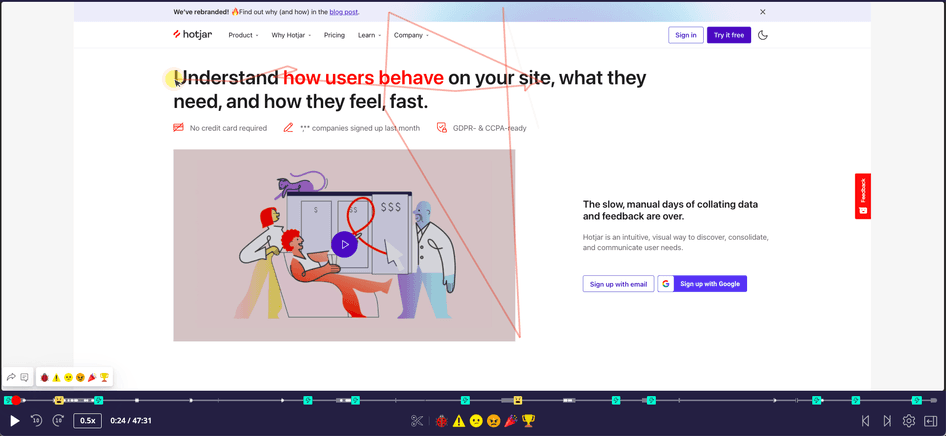
For example, Hotjar helps you determine the activities of users within the product and where they spend most of their time. If a critical button is located at a point that users do not notice, you can change the location of this button according to the heatmap and increase the usage rate of the feature.
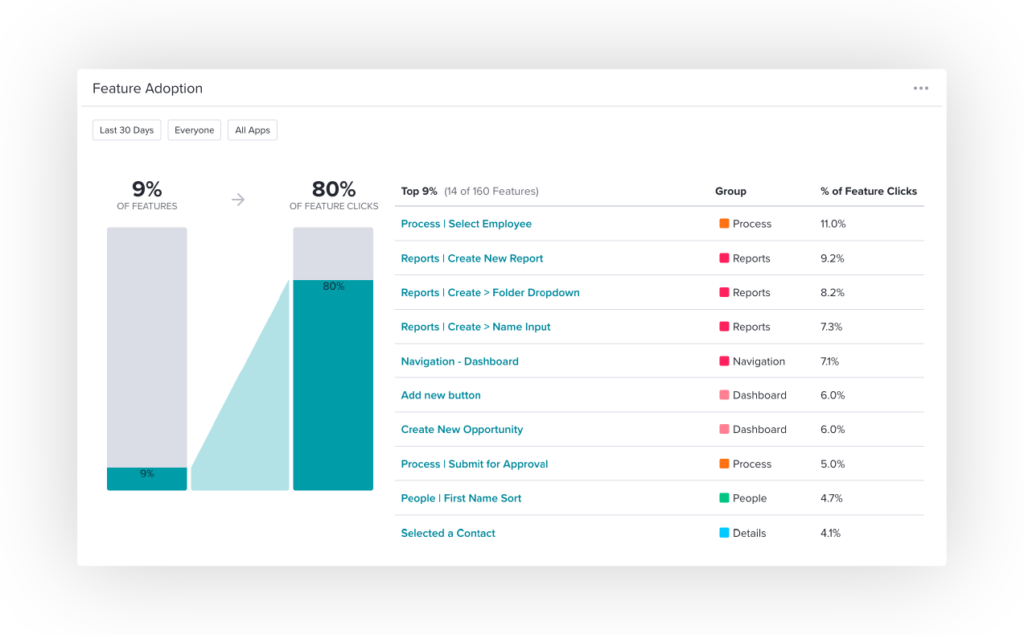
And you can use Pendo’s analytics and reporting tools to identify user data and trends. By tracking user behavior, you can analyze how users interact with your product. For example, you can make improvements to the product by easily tracking data such as which feature a user used the most or which page he stayed on the longest.
3. Create a Welcome Message
First impressions shape future engagements. By making a welcoming experience that is warm, interesting, and full of information, users feel valued and at home.
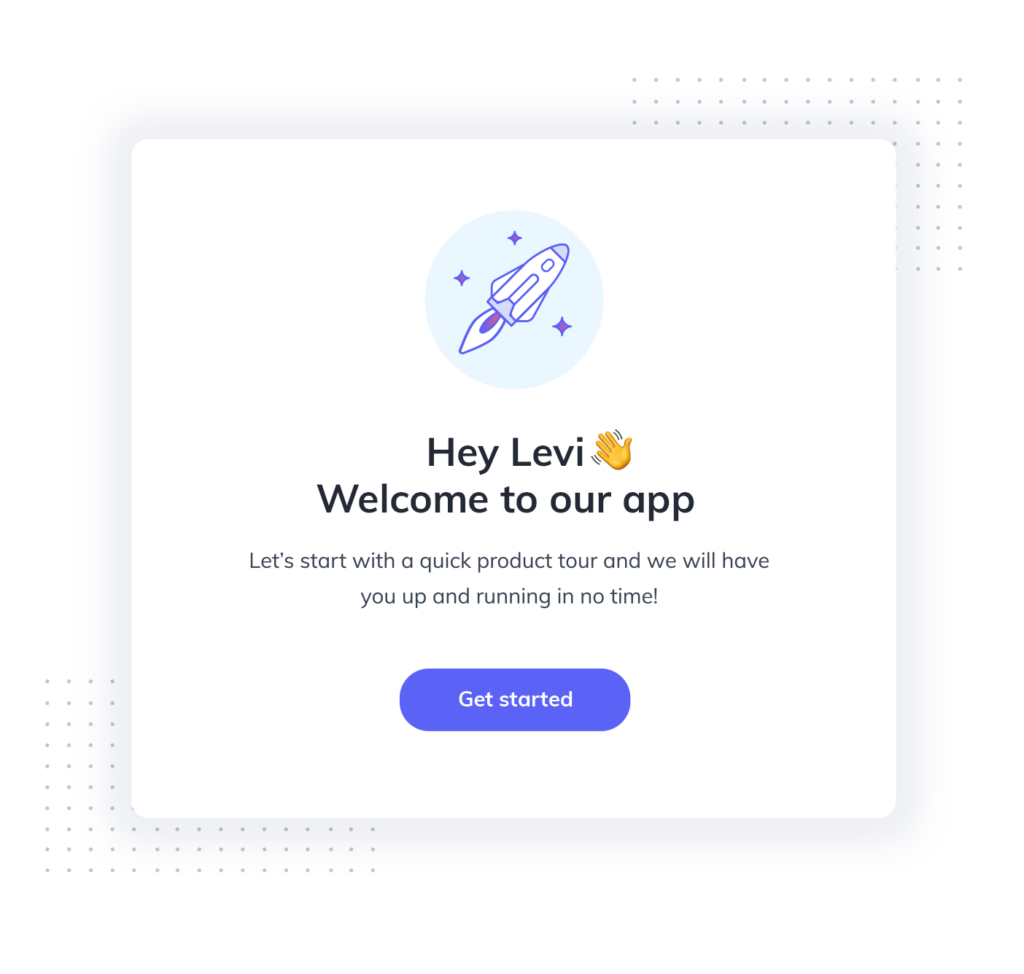
A well-planned in-app welcome message, or welcome email series tells people what to expect and how to move forward.
On the other hand, product tours and introductory videos can show users what to do and where to go as they start their journey.
4. Choose Onboarding Model
Different users of different products have different needs. It is very important to choose the right onboarding model.
For simple products, a self-service model (aka product-led onboarding) with easy-to-understand instructions might be enough. But for more complicated platforms, the low-touch or high-touch onboarding methods, which offer more support and guidance, might be better. The goal is to match the model to the product and to how familiar and comfortable the user is with it.
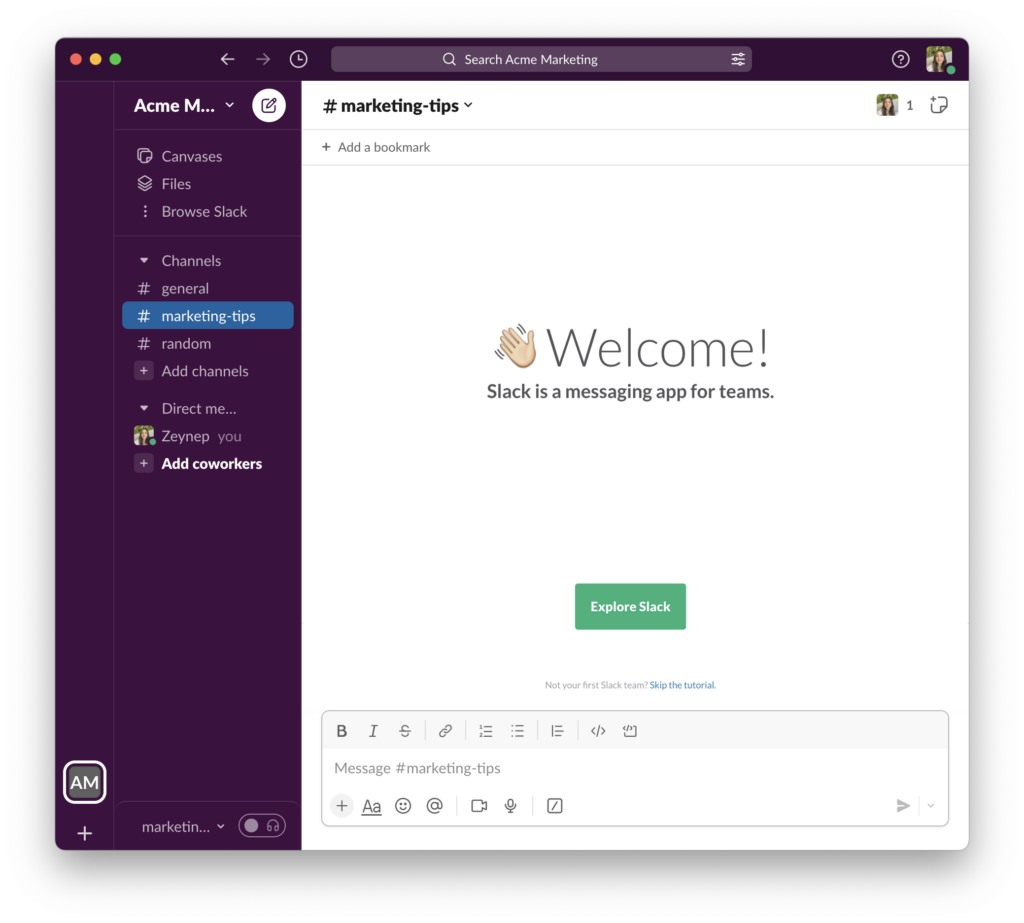
- Self-Service Onboarding: It is one of the most useful models for SaaS products. With this method, your users can complete the onboarding alone, thanks to the introductory guide or walkthrough and simple directions, and do not need any outside support.
This model is widely used by products and services that use product-led growth as their core growth strategy. After a few initial information, users begin to explore the product. - Low-touch onboarding: The low-touch onboarding model takes it up a notch by incorporating onboarding elements such as interactive walkthroughs, in-app product tours, step-by-step checklists, and beginner tutorials.
While low-touch onboarding does offer some human support options, it doesn’t allocate a dedicated support team for each customer. This type of onboarding works best for products that are moderately complex and require multiple steps but don’t necessarily require hand-holding throughout the process.
Low-touch onboarding has quickly become the gold standard for many of today’s most successful SaaS companies. Well-established organizations like Zoom, Shopify, Canva, and Mailchimp have adopted the low-touch model, which has proven to engage customers and create a base of loyal advocates effectively. - High-touch onboarding: If you’re dealing with a complex product that requires multiple steps to set up or a significant time investment, then high-touch onboarding is a valuable model to employ. This approach involves providing personalized, one-on-one experiences that cater to your customer’s unique needs and often entails creating customized onboarding resources.
5. Update Regularly
The digital world and people’s expectations are always changing. You can’t just stay the same.
By keeping an eye on user feedback and engagement metrics regularly, you can spot trends, spot potential problems, and make the necessary changes.
This proactive approach makes sure that your onboarding process stays effective, up-to-date, and focused on the user.
Conclusion
The performance of your onboarding process is a factor that directly affects the revenue and long-term success of your product. You cannot measure the performance of your engagement process without a data-driven strategy.
Remember to keep your SaaS customer onboarding process simple and straightforward. Also, be open to constantly collecting feedback and improving your onboarding process. Excellence is not a term that you have at the beginning. Therefore, you must be willing to change and develop.
With a strong onboarding strategy, you can retain your customers for a long time. This is one of the main secrets to creating a successful SaaS product.
Further Reading 📚
In-app Welcome Message Examples by Appcues
Frequently Asked Questions
What is SaaS customer onboarding?
SaaS customer onboarding is the structured process through which new users of a Software-as-a-Service product are introduced, educated, and guided to effectively use and derive value from the product.
What are the phases of SaaS onboarding?
The phases of SaaS onboarding typically include:
- Welcome and introduction
- Product setup and configuration
- Education and training on key features
- Engagement and encouragement for regular use
- Feedback collection and ongoing support.
Why is customer onboarding important in SaaS?
Customer onboarding in SaaS is vital because it directly impacts user adoption, retention, and product success. A smooth onboarding experience ensures that users understand the product’s value and can use it effectively, leading to satisfied customers and reduced churn.

